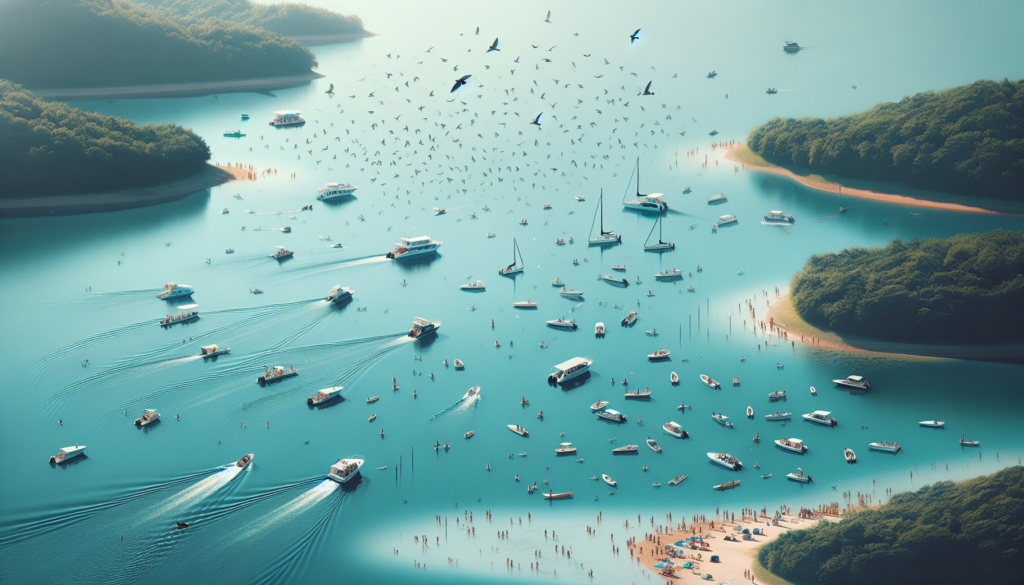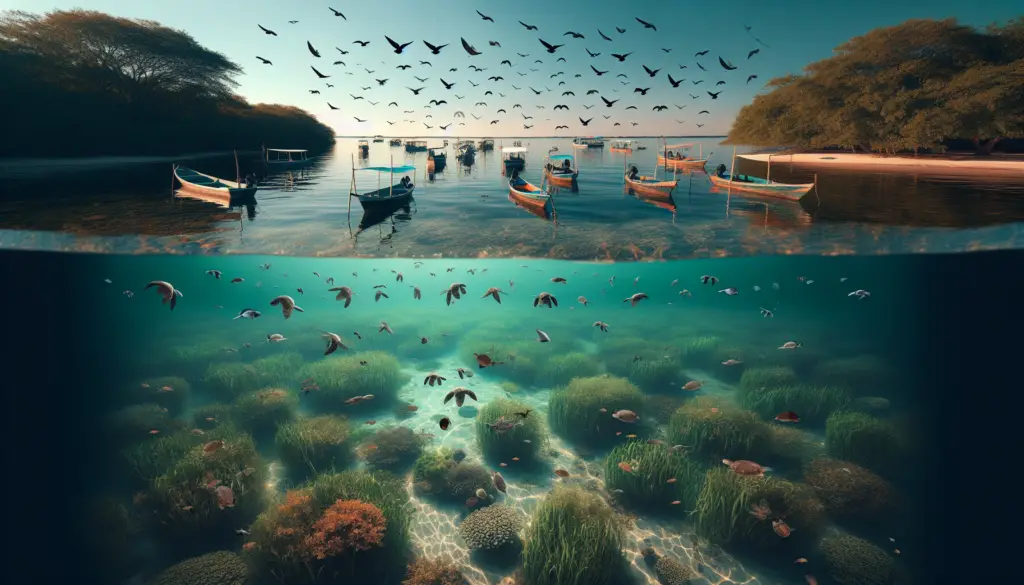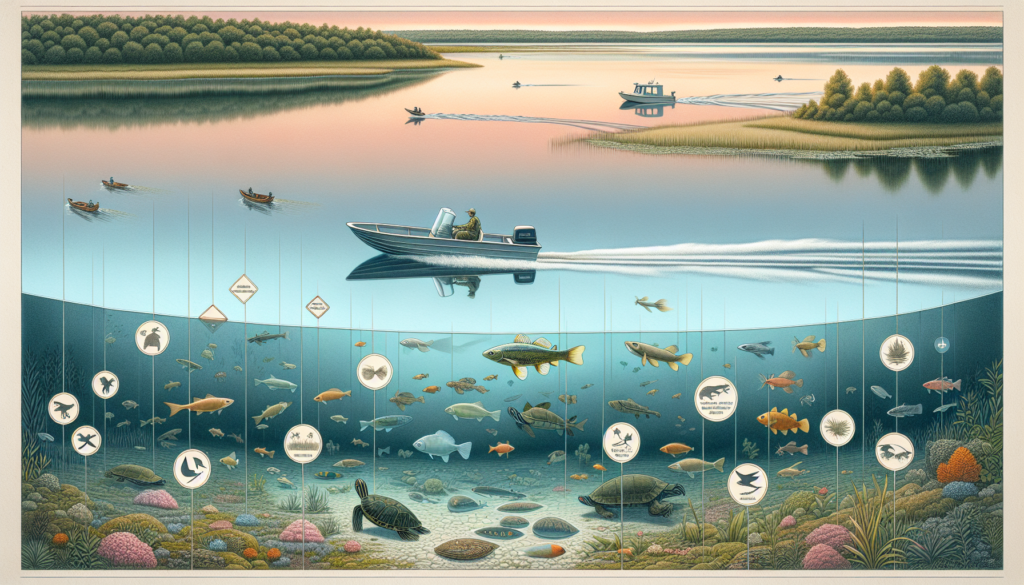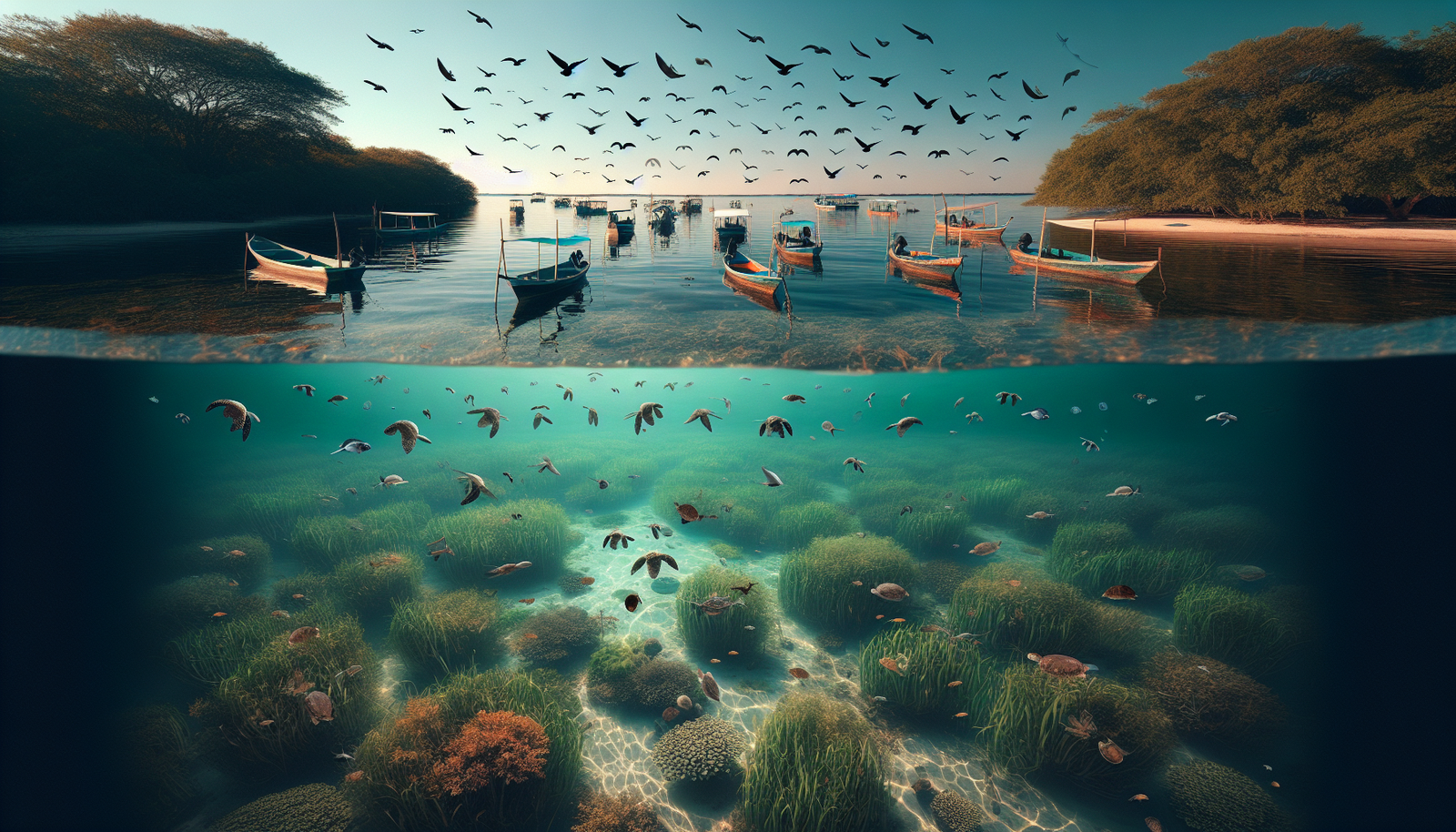If you’re an avid boater or sailing enthusiast, it’s vital to understand the importance and excitement of winning without causing harm to the wildlife in protected waters. Balancing Wins and Wildlife: navigating protected waters while boating, brings you face to face with essential practices for responsible boating. The guide taps into the thrill of the chase while emphasizing the need to respect marine life and preserve aquatic habitats. It’s your access to sail the waters consciously, valuing both competitive passion and environmental stewardship.

Understanding Protected Waters
Protected waters are a critical part of our natural world, acting as reserves for marine life, and playing a vital role in balancing our ecosystem. They are designated areas of sea, estuaries, or large lakes, that are protected by law for conservation purposes.
Definition and Importance of Protected Waters
Protected waters, as the name suggests, are water bodies that are conserved and protected by government or international agreement due to their environmental, cultural, or scientific significance. These areas are essential for the health of our planet. They safeguard marine species and habitats, support fisheries, and maintain water quality, among other things.
Different Types of Protected Waters
There’s a variety of protected waters that vary in terms of what they’re protecting and the regulations in place. For example, Marine Protected Areas (MPAs) focus on conserving marine life and its natural habitat. National Marine Sanctuaries may aim to preserve significant cultural sites like shipwrecks along with their natural environment. Marine Reserves are often no-take zones, where all extractive and disruptive activities are prohibited to protect marine biodiversity.
Legislation Governing Protected Waters
Several laws govern the management and conservation of protected waters. These can vary depending on the country but all have similar aims – to maintain, preserve, conserve, and restore these precious water bodies. For instance, in the US, laws such as the Marine Mammal Protection Act and National Marine Sanctuaries Act were enacted to ensure that these areas are appropriately maintained and respected.
The Biodiversity of Protected Waters
Protected waters play host to a stunning array of life forms. From fish, marine mammals, and birds to various plankton, seaweeds, and corals. Each species plays an integral role in the marine ecosystem.
Why Biodiversity Matters
Biodiversity, the variety of life, is essential in maintaining a healthy and resilient ecosystem. It boosts ecosystem productivity and ensures a sustainable yield of resources. The more diverse the species that live in an area, the healthier and more stable the ecosystem is.
Marine Wildlife in Protected Waters
The marine life within protected waters is diverse and rich, ranging from the tiniest plankton to the largest whales. Each species has a part to play in the upkeep of these habitats. For example, coral reefs provide a home for diverse species and play a major role in nutrient recycling.
Endangered Species within Protected Waters
Many protected waters serve as critical habitats for endangered species, providing them with a safe space free from human interference. Endangered marine animals such as certain whale and turtle species rely heavily on such areas for their survival and recovery.

Mitigating Impact on Wildlife
As boaters, it’s vital to understand and limit our impact on marine wildlife. Actions such as maintaining a safe distance and respecting mating and feeding seasons can make a significant difference.
Potential Harm of Unrestricted Boating on Wildlife
Unrestricted boating can lead to issues like habitat destruction, water pollution, and disturbances that can impact marine wildlife’s normal behavior. noise pollution produced by boat engines can interfere with the communication, navigation, and feeding patterns of underwater animals.
Keeping Safe Distance from Marine Wildlife
Maintaining a safe distance from marine wildlife is essential. This gives them space to engage in natural behaviors without stress or interference. Each species will have a different recommended viewing distance, so it’s important to inform and educate ourselves to limit our impact.
Respecting Mating and Feeding Seasons
Mating and feeding are crucial times for any species. Respecting these imperative times by avoiding specific areas can prevent disturbances and ensure the survival of the next generation.
Adopting Responsible Boating Practices
Being a responsible boater not only means taking care of your vessel but also respecting the marine environment you’re navigating.
Recognizing No-Wake Zones
No-wake zones are areas where watercraft must proceed at an idle speed to prevent creating a wake. This can protect both the delicate shoreline habitats and marine life.
Understanding Speed Limits
There are speed limits in protected water areas to ensure the safety of both boaters and wildlife. Excessive speed can harm marine life, especially the ones right below the surface, and can also lead to erosion of the shoreline.
The Importance of Regular Maintenance
Regular maintenance of your boat can prevent the need for emergency repairs that might damage the marine environment. Additionally, regular maintenance can help prevent leakages of harmful substances into the water which can be detrimental to water health.

Managing Waste While Boating
Waste management should be a top priority for every boater. This includes properly disposing of both solid and liquid waste, understanding the harm of plastic in oceans, and the dangers associated with ballast water release.
Proper Disposal of Solid and Liquid Waste
Be sure to properly manage waste by using trash cans on board and emptying them at designated disposal facilities once ashore. Avoid tossing anything overboard, as it might harm marine life or degrade the water quality.
The Dangers of Plastic in Oceans
Plastics pose a significant threat to marine wildlife. They are not biodegradable and can remain in the environment for hundreds of years. Marine animals can mistake them for food, leading to injury and death. It is crucial to limit plastic usage and ensure no plastic waste enters the water bodies.
Invasive Species and Ballast Water Release
Ballast water release can lead to the introduction of invasive species that can out-compete native species for food or habitat, leading to disequilibrium in the ecosystem. Boaters should ensure they follow the right ballast water management protocols.
Navigational Aids within Protected Waters
Navigational aids like buoys, lighthouses, GPS, and chart plotters assist in safe boating, while chart reading skills are essential for every boater.
Buoys and Lighthouses
Buoys and lighthouses are designed to provide a visual guide for boaters. They define safe water areas, provide information about the boater’s position, and warn about dangers like shallows or rocks.
GPS and Chart Plotters
GPS and chart plotters are the essential equipment that helps in accurately defining positions and planning routes, thus preventing boaters from wandering into protected areas unknowingly.
Chart Reading Skills
Reading charts is a vital skill for every boater. It gives you information about the water depth, the location of navigational aids, potential hazards, and locations of protected areas.

Responsible Fishing in Protected Waters
Fishing in protected waters requires a deep respect for the marine environment and specific techniques that minimize stress on fish species.
Proper Catch and Release Techniques
Using circle hooks, handling fish appropriately, reviving exhausted fish, and releasing them gently are all parts of the catch and release process that can ensure their survival after being released.
Respecting Size and Bag Limits
Consider the age, size, and the reproductive status of the fish before you decide to keep it. Stick to bag limits and size restrictions. These have been set for a reason – to maintain a balanced marine ecosystem.
Avoiding Certain Species during Breeding Seasons
Some species should not be targeted during their breeding seasons to give them a chance to reproduce successfully. Respect those periods to maintain the species well-being.
Cultural and Archaeological Considerations
Waterways often connect us with the past – holding cultural sites, shipwrecks, and underwater archaeological treasures.
Boating Near Native Cultural Sites
Native cultural sites hold historical and spiritual significance. Respecting these sites means keeping a safe distance and not disturbing them in any way.
Respecting Shipwrecks and Underwater Archaeological Sites
Shipwrecks and underwater archaeological sites are a glimpse into our maritime past. Like onshore archaeological sites, these should be admired from a distance and left undisturbed.
National and International Rules Governing Cultural and Historical Sites
Every country has laws to protect its historical and cultural sites. Similarly, international regulations protect sites of universal value. Understanding and respecting these laws play a key role in conserving our past.
Emergency Procedures and safety protocols
Even the most experienced boaters can find themselves in emergency situations, understanding how to respond is crucial to ensuring everyone’s safety.
What to Do in Case of a Wildlife Encounter
A close encounter with wildlife can be exhilarating, but it may also present dangers. Remain calm, slow down, and try to move away while avoiding any sudden movements.
How to Respond in Emergency Situations
Every boater should be prepared for a variety of emergency situations – from fires on board to sudden sickness. Having a comprehensive understanding of potential emergencies and knowing how to respond could save lives.
Safety Equipment and Basic First Aid on Board
Ensure that your boat is equipped with necessary safety gear such as life jackets, fire extinguishers, and first-aid kits among others. Knowledge of basic first aid is equally important and can make a big difference in case of any accidents.
Educating Other Boaters About Responsible Practices
By demonstrating responsible boating practices and sharing this information with others, you can help promote respect and care for our protected waters.
Sharing Information About Protected Waters
Sharing information about protected waters and the lives they harbor can help raise awareness, promoting understanding and respect for these vital ecosystems.
Conducting and Attending Awareness Programmes
Attending and conducting educational programmes can play a major role in spreading necessary information and the importance of responsible boating in protected waters.
Importance of Setting a Good Example
Setting a good example by following guidelines and regulations not only helps protect these treasured waterways but also inspires other boaters to do the same. Remember, actions speak louder than words!
In conclusion, navigating protected waters involves a comprehensive understanding of the environment and the adoption of responsible boating practices. Remember, these waters are not just for our enjoyment, but they are also home to countless marine species worth protecting. As boaters, we have the responsibility to protect and respect these fragile ecosystems for present and future generations.


